Abstract
Flecainide acetate has been shown to be a potent antiarrhythmic agent which is active for more than 8 h, whether given intravenously or orally. However, the negative inotropic effect demonstrated in animal studies could hamper the potential clinical utility of the drug. Ten patients with coronary artery disease but without cardiac failure were given intravenous flecainide (2 mg/kg). Stroke index (SI), left ventricular systolic pressure (LVP), end diastolic pressure (EDP) and LV contractility indices (max dP/dt, VCE 40 mm Hg, peak VCE, Vmax from total pressure (TP] were measured immediately before and 10 min after flecainide, under resting conditions and during atrial pacing with heart rates up to 133 +/- 4.2 beats/min (mean +/- s.e. mean). It is demonstrated that flecainide has a negative inotropic effect, not only under resting conditions, but also less apparently during pacing-induced tachycardia. The effect appears to be dose-related and may result in a reduction of cardiac performance.
Full text
PDF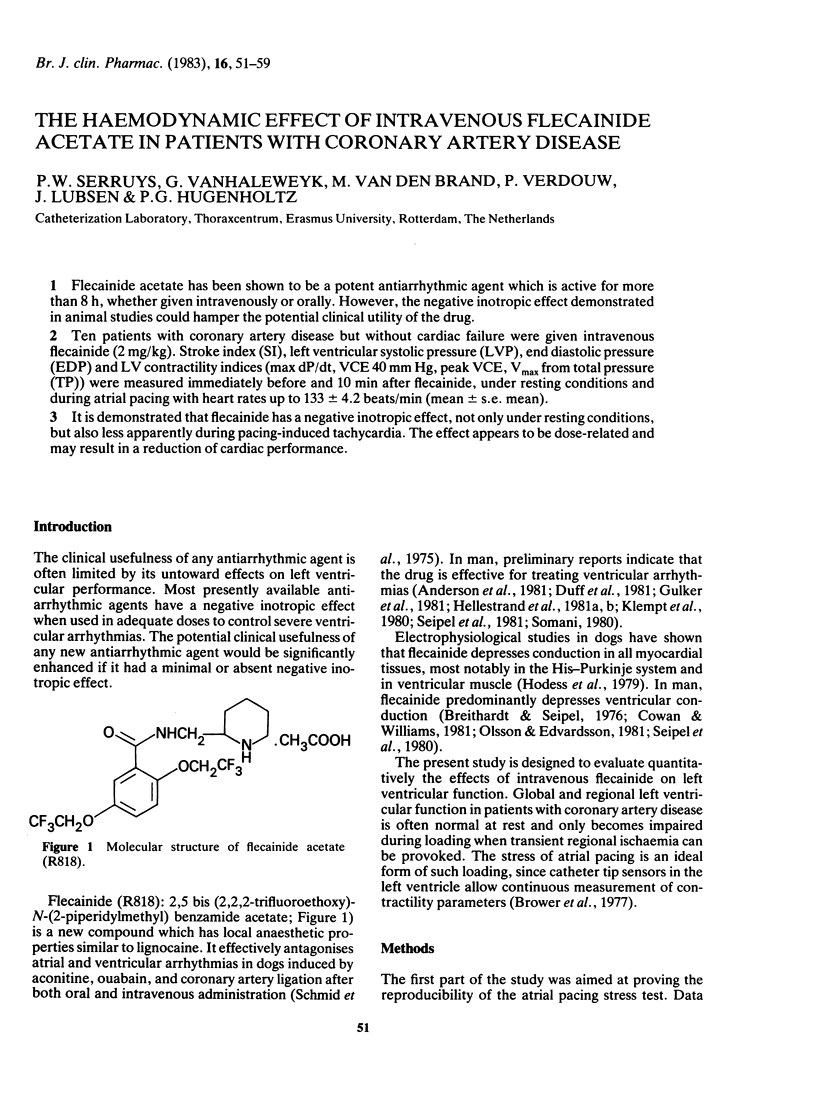
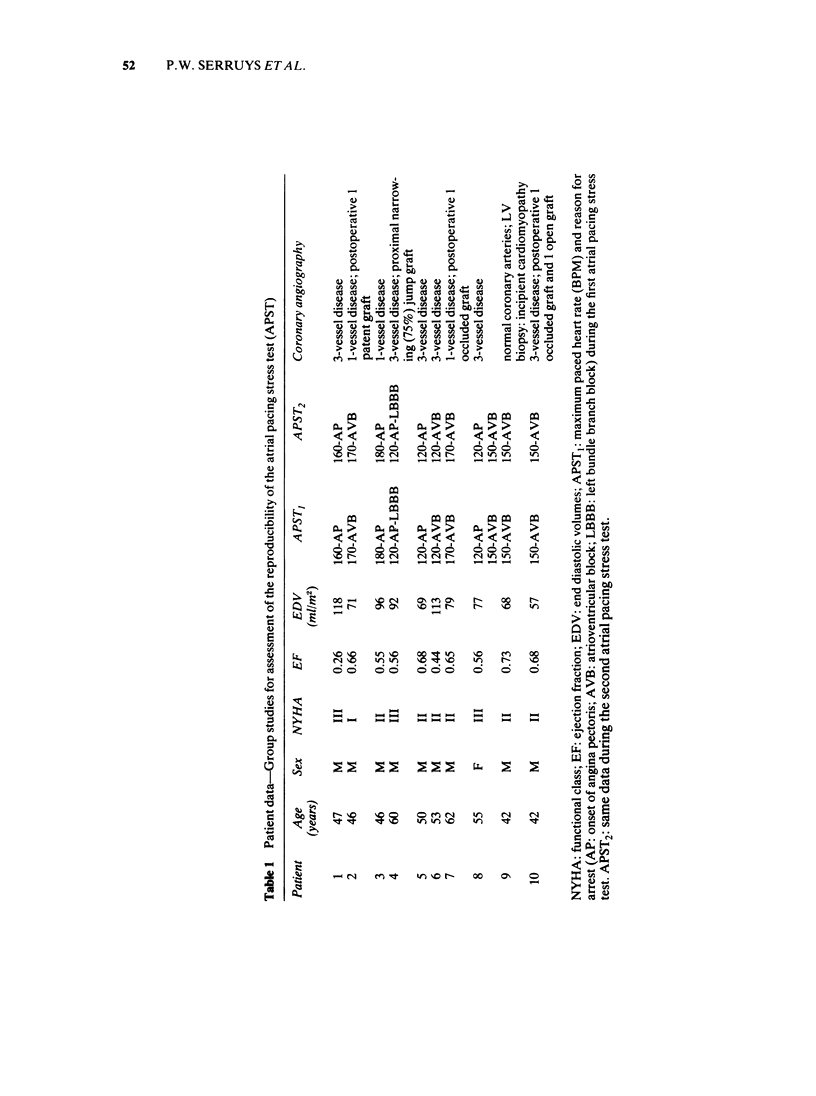
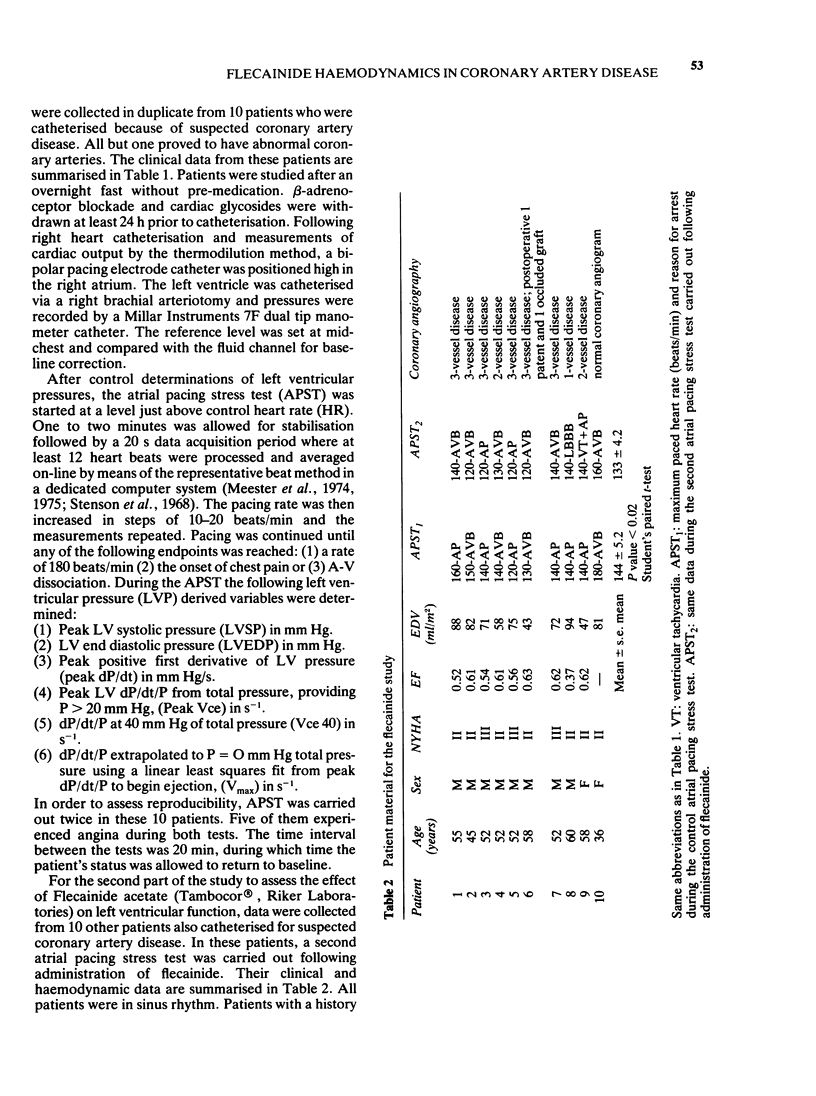
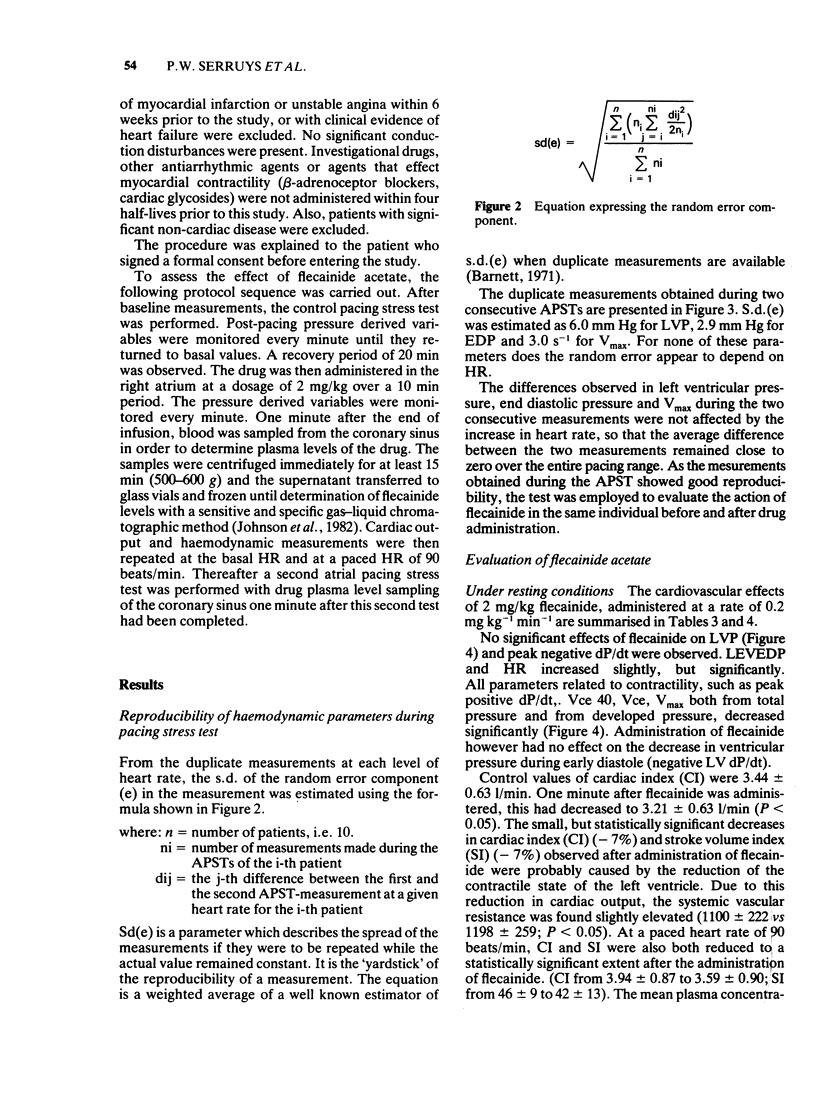
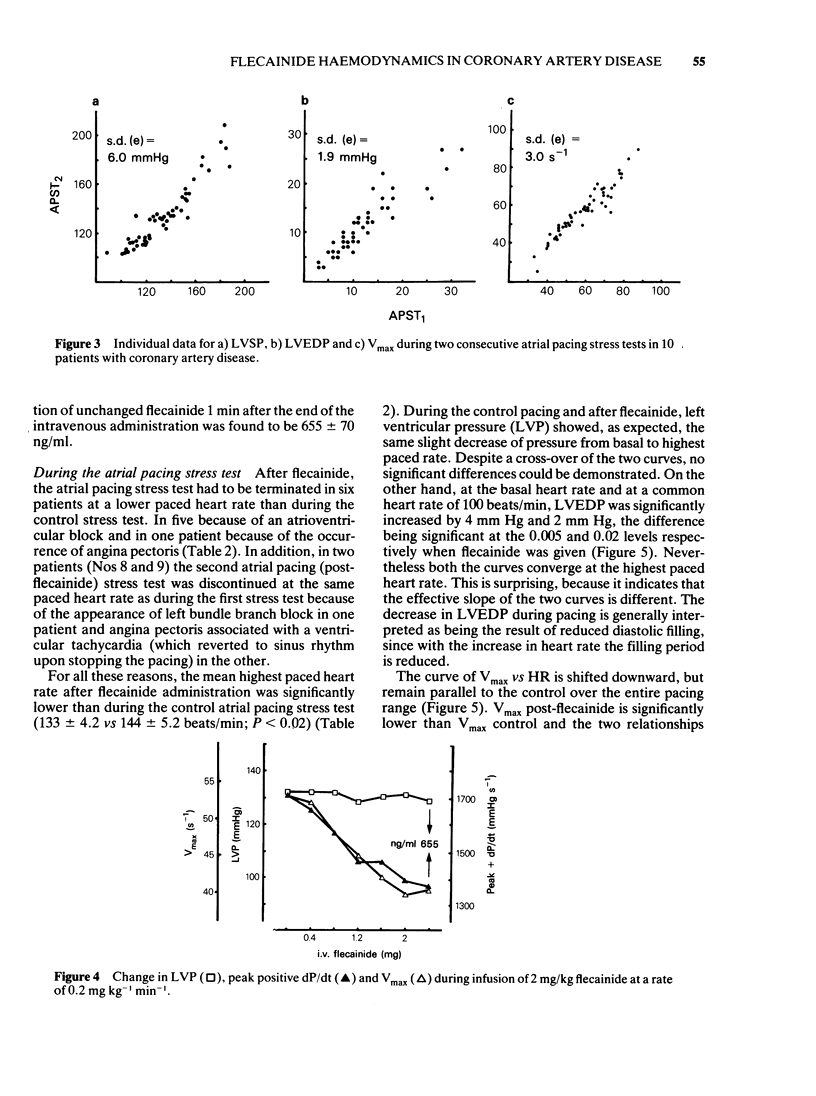
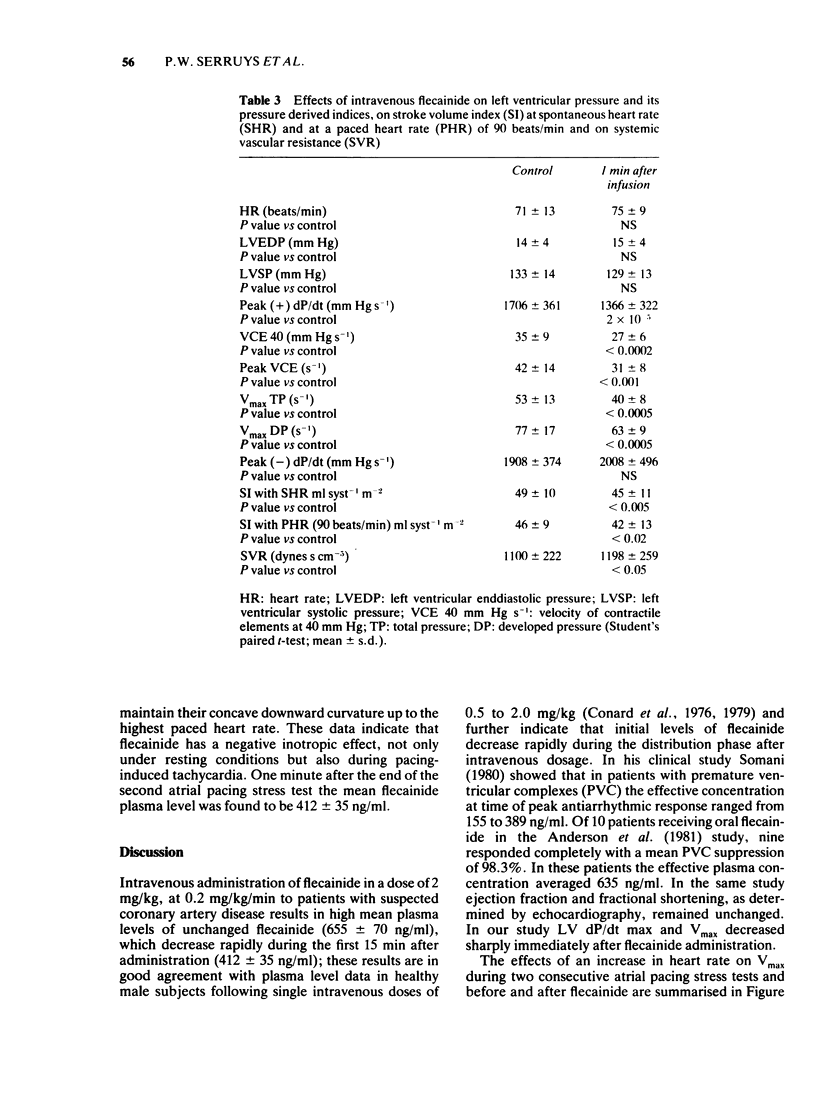
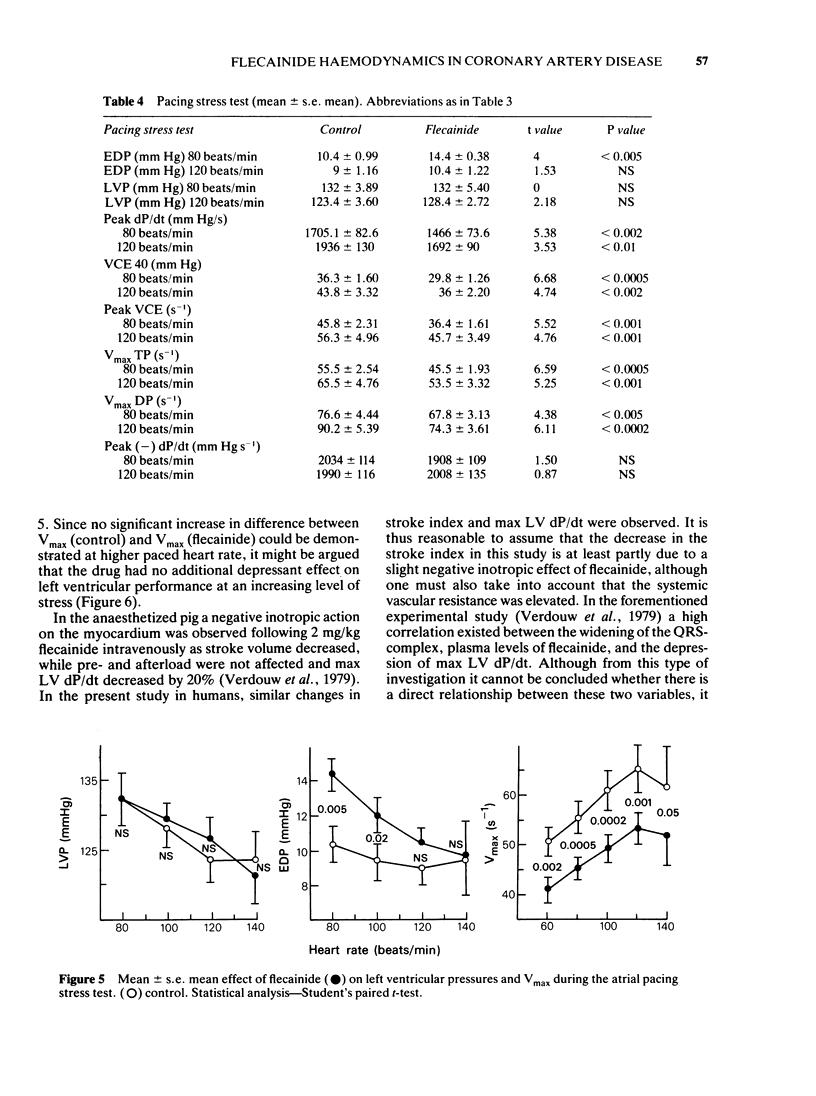
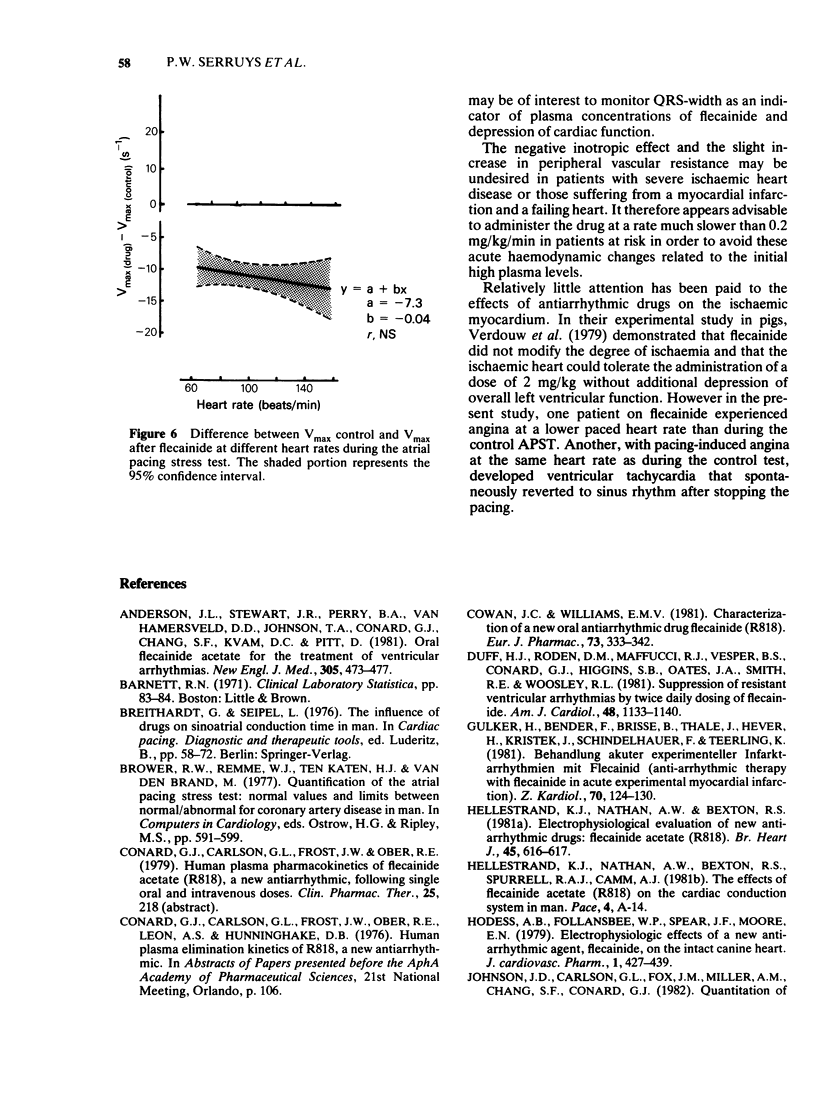
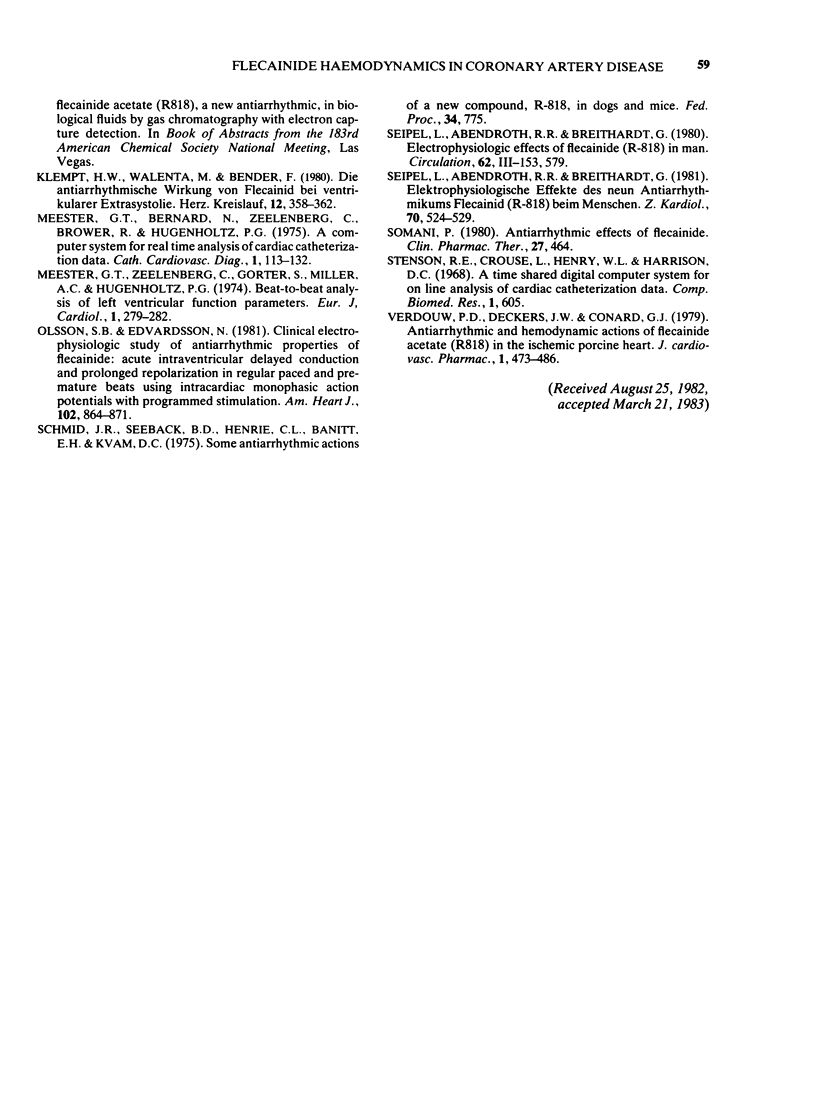
Selected References
These references are in PubMed. This may not be the complete list of references from this article.
- Anderson J. L., Stewart J. R., Perry B. A., Van Hamersveld D. D., Johnson T. A., Conard G. J., Chang S. F., Kvam D. C., Pitt B. Oral flecainide acetate for the treatment of ventricular arrhythmias. N Engl J Med. 1981 Aug 27;305(9):473–477. doi: 10.1056/NEJM198108273050901. [DOI] [PubMed] [Google Scholar]
- Duff H. J., Roden D. M., Maffucci R. J., Vesper B. S., Conard G. J., Higgins S. B., Oates J. A., Smith R. F., Woosley R. L. Suppression of resistant ventricular arrhythmias by twice daily dosing with flecainide. Am J Cardiol. 1981 Dec;48(6):1133–1140. doi: 10.1016/0002-9149(81)90331-3. [DOI] [PubMed] [Google Scholar]
- Gülker H., Bender F., Brisse B., Thale J., Heuer H., Kristek J., Schindelhauer F., Teerling K. Behandlung akuter experimenteller Infarktarrhythmien mit Flecainid. Z Kardiol. 1981 Feb;70(2):124–130. [PubMed] [Google Scholar]
- Hodess A. B., Follansbee W. P., Spear J. F., Moore E. N. Electrophysiological effects of a new antiarrhythmic agent, flecainide, on the intact canine heart. J Cardiovasc Pharmacol. 1979 Jul-Aug;1(4):427–439. doi: 10.1097/00005344-197907000-00005. [DOI] [PubMed] [Google Scholar]
- Meester G. T., Bernard N., Zeelenberg C., Brower R. W., Hugenholtz P. G. A computer system for real time analysis of cardiac catheterization data. Cathet Cardiovasc Diagn. 1975;1(2):113–132. doi: 10.1002/ccd.1810010203. [DOI] [PubMed] [Google Scholar]
- Meester G. T., Zeelenberg C., Gorter S., Miller A. C., Hugenholtz P. G. Beat-to-beat analysis of left ventricular function parameters. Eur J Cardiol. 1974 Mar;1(3):279–282. [PubMed] [Google Scholar]
- Olsson S. B., Edvardsson N. Clinical electrophysiologic study of antiarrhythmic properties of flecainide: acute intraventricular delayed conduction and prolonged repolarization in regular paced and premature beats using intracardiac monophasic action potentials with programmed stimulation. Am Heart J. 1981 Nov;102(5):864–871. doi: 10.1016/0002-8703(81)90037-5. [DOI] [PubMed] [Google Scholar]
- Seipel L., Abendroth R. R., Breithardt G. Elektrophysiologische Effekte des neuen Antiarrhythmikums Flecainid (R 818) beim Menschen. Z Kardiol. 1981 Jul;70(7):524–529. [PubMed] [Google Scholar]
- Somani P. Antiarrhythmic effects of flecainide. Clin Pharmacol Ther. 1980 Apr;27(4):464–470. doi: 10.1038/clpt.1980.65. [DOI] [PubMed] [Google Scholar]
- Verdouw P. D., Deckers J. W., Conrad G. J. Antiarrhythmic and hemodynamic actions of flecainide acetate (R-818) in the ischemic porcine heart. J Cardiovasc Pharmacol. 1979 Jul-Aug;1(4):473–486. doi: 10.1097/00005344-197907000-00010. [DOI] [PubMed] [Google Scholar]


